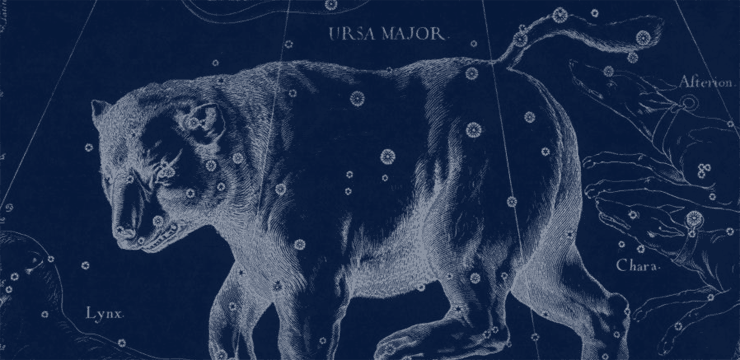May Constellations & Folklore
May 2011 :
As the sky begins to remind us that a new month is approaching, we are able to see a constellation that is often forgotten, but much more important than we usually let on.
Coming into view is Ophiuchus, the Doctor, the person who is credited with creating the elixir allowing us eternal life; unfortunately, this didn't go over very well with Pluto, god of the underworld, who realized he'd lose his incoming subjects. Therefore, he sent a serpent up to Ophiuchus, with the result if the Doctor won, we'd all live forever; a snake victory and Pluto would continue his population increase.
Now, at this point, we have to consider the actual definition of a constellation. We normally think of one as a certain picture (real or imagined) in the sky. Actually, a constellation is a section of the sky. We now have, and most likely will continue to have, 88 constellations. But, the sky is broken into 89 parts, much like a spherical jigsaw puzzle. On either side of Ophiuchus is a part of the animal he is fighting, Serpens. From our perspective, as we are looking at him, to the right, or west side of him is the portion of Serpens containing his head, Serpens Caput. To the east of Ophiuchus is Serpens Cauda, the snake's tail. In a good sky, you might be able to see the entire snake across the Doctor's body, but, as two objects can't inhabit the same place in the sky, that belongs to Serpens' adversary.
Above Ophiuchus is another great person, Hercules. Many of his labors are in various parts of the sky, so it is fitting he should be enjoyed also. He is rather easy to identify because his basic shape is his initial, a capital "H," and his body consists of yet another of the sky's crooked squares, an asterism called the Keystone, which looks nothing like the one on Pennsylvania license plates. Looking on the right, or west side of the top of the Keystone, then moving about a third of the way downward, you might just be able to see a fuzzy-looking starlike object, if you are in a dark sky. Otherwise, do this with your binoculars and you will find one of our better globular clusters, M13. This giant member of our galaxy contains about 1,000,000 stars so tightly packed that our eyes can not resolve them individually. Actually, Hercules has a second of these globular clusters, M92. Try to locate that one above and to the left of M13, near Hercules' leg.
Below Ophiuchus is one of the easiest shapes to recognize, Scorpius, the
Scorpion. This constellation from our latitude is perfectly seen, as
his lower body just skims across out southern horizon. Scorpius is the
animal credited with killing Orion, the Hunter. Because of this, the two
can not be seen in the sky at the same time. As the scorpion now
desires to be seen, Orion must leave. He can only return to our evening
skies when Scorpius allows him to by setting in the western sky later in
the year.
Although to us this image is a perfect animal, Hawaiian mythology has
this as a fishhook, cast by the fisherman Maui. The hook got caught on
the bottom of the ocean, and when Maui finally pulled it up, along with
it came the Hawaiian islands.
The scorpion's stinger, to the American Indians, was a very important part of their planting season. Those four stars reminded them of rabbit tracks. There are several of these tracks in the sky, but these were especially relevant, as when they were first rising out of the eastern horizon, it became planting time. The tracks, when visible due south, noted the central crop time, and when they were setting in the west, it was time to harvest.
Scorpius also is given more credit than it is due with respect to the position of the Sun in this part of the sky, as the scorpion is considered one of the twelve constellations through which the Sun travels during the course of the year, the zodiacal constellations. Actually, the Sun only visits Scorpius for about a week; for the rest of the "scorpion time" the Sun is located in Ophiuchus. Don't tell your astrologer friends, though. They won't add the Doctor to their charts.
When to Observe
Constellations
Related Topics




